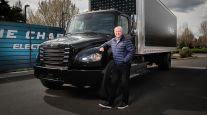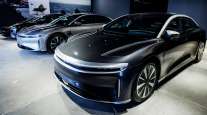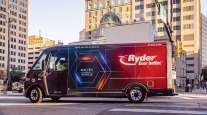Senior Reporter
Maryland to Receive $15 Million for EV Charging Network
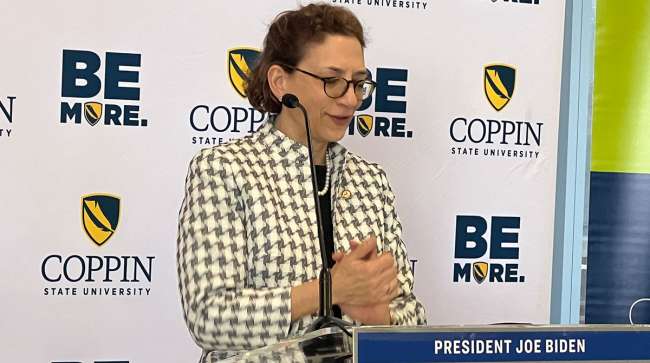
[Stay on top of transportation news: Get TTNews in your inbox.]
BALTIMORE — The Biden administration’s second wave of money to ramp up the nation’s electric vehicle charging network is getting to state and local governments, and officials say this round of $623 million will be focused on disadvantaged communities and freight trucks.
Maryland is one of the states that will be receiving $15 million, and at an event at Coppin State University, U.S. Transportation Deputy Secretary Polly Trottenberg told Transport Topics, while much of this funding will be for personal vehicles, the administration believes electric and zero-emission trucks are an essential part of the nation’s transportation future.
“In the freight sector, we are looking at ways to decarbonize not only trucks but also the maritime sector, and a lot of these efforts are somewhat nascent. But as we’re seeing in the EV sector, the prices are starting to come down as the industry gets up and running, and there are economies of scale and they will become more affordable,” she said. “There are a lot of long-term advantages in reducing our reliance on fossil fuels.”
DOT points to the $70 million awarded to the North Central Texas Council of Governments to develop and build up to five hydrogen fueling stations for medium- and heavy-duty freight trucks in Dallas-Fort Worth, Houston, Austin and San Antonio. The project will help create a hydrogen corridor from Southern California to Texas.
Maryland is going electric
Deputy Secretary Polly Trottenberg joined officials on the ground to announce funding to build 58 EV charging ports statewide. These stations will fill the gaps in Maryland's charging network and make owning an EV more convenient and reliable. pic.twitter.com/NDC3m0OTpE — U.S. Department of Transportation (@USDOT) January 12, 2024
California also will get $20 million for hydrogen development in Los Angeles, with 35% of the money designated for heavy-duty trucking.
This is on top of the $600 million in Department of Energy funding the ports of Los Angeles and Long Beach plan to jointly spend to develop a hydrogen fuel network and convert those facilities to zero-emission operations by the middle of the next decade.
It will involve the development of hydrogen fuel cell cargo-handling equipment and mobile hydrogen fueling trucks or stations in the ports’ terminals, with the eventual deployment of 5,000 hydrogen fuel cell heavy-duty trucks.
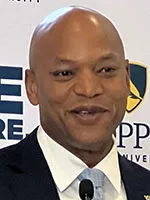
Moore
At the Baltimore event Jan. 12, Maryland Gov. Wes Moore was joined by the state’s U.S. senators — Ben Cardin and Chris Van Hollen — and other government leaders, who outlined what they said would be the economic and environmental benefits of moving to a zero- or low-emission energy source for transportation.
“It’s not just about setting bold goals; it’s putting together a plan to be able to accomplish them,” Moore said. “The proposed sites for these 58 EV charging stations include locations in disadvantaged communities intentionally; I have been very clear that we are going to achieve 100% clean energy by 2035 and zero emissions by 2045.”
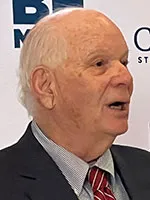
Cardin
Moore also said the electric charging stations will create 600 high-paying jobs for certified electricians to install and maintain the system.
“We as an administration are going to reject this false choice that says the transition to clean energy is either going to be effective or equitable — it’s going to be both,” Moore said. “We see a future that is greener, that’s cleaner, that’s more sustainable, that’s more prosperous, and it’s a future that sees everybody.”
But the leaders also acknowledged that the road to an electric or alternative-fuel future would have many challenges, not the least of which is getting the public to buy in to the idea. But they believe projects such as the one the Biden administration is implementing as part of the $1.2 trillion infrastructure law will be successful.
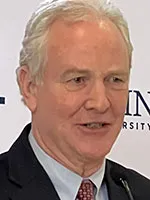
Van Hollen
“We all know that when people are thinking about buying an electric vehicle, the first thing they do is get out their maps and get online and try to figure out where all the charging stations are,” Van Hollen said.
Trottenberg said the new EV infrastructure will add to an estimated 170,000 charging stations across the country, and the administration wants to increase that number to 500,000 by 2026, ahead of their original schedule.
“Several of the projects we envision are shovel-ready, and it’s a matter of moving the funding and getting the project kicked off; several of the projects are already under contract to be done,” she said.
Peter Vaughan Schmidt of Torc and Joanna Buttler of Daimler Truck discuss the timeline for autonomous trucks entering the market and how they could blend into existing fleet operations. Tune in above or by going to RoadSigns.ttnews.com.
Earlier in the day, Moore and the senators announced a separate $80 million federal grant to the Maryland Transportation Authority, which oversees the state’s toll roads and facilities, for upgrades to ease roadway congestion on the Interstate 895 Baltimore Harbor Tunnel. An estimated 27.6 million vehicles travel through the Harbor Tunnel each year, and drivers often face backups for miles during rush hour.
Part of the project will remove the toll plaza and install new overhead electronic toll-collection gantries, which officials said would improve safety and could reduce car and truck crashes by 75%.
The tunnel that carries Interstate 895 under the harbor opened in November 1957. Most trucks, unless they are oversize, can use the tunnels. Hazmat trucks are not allowed and must use the Baltimore Beltway instead.
Want more news? Listen to today's daily briefing below or go here for more info:



